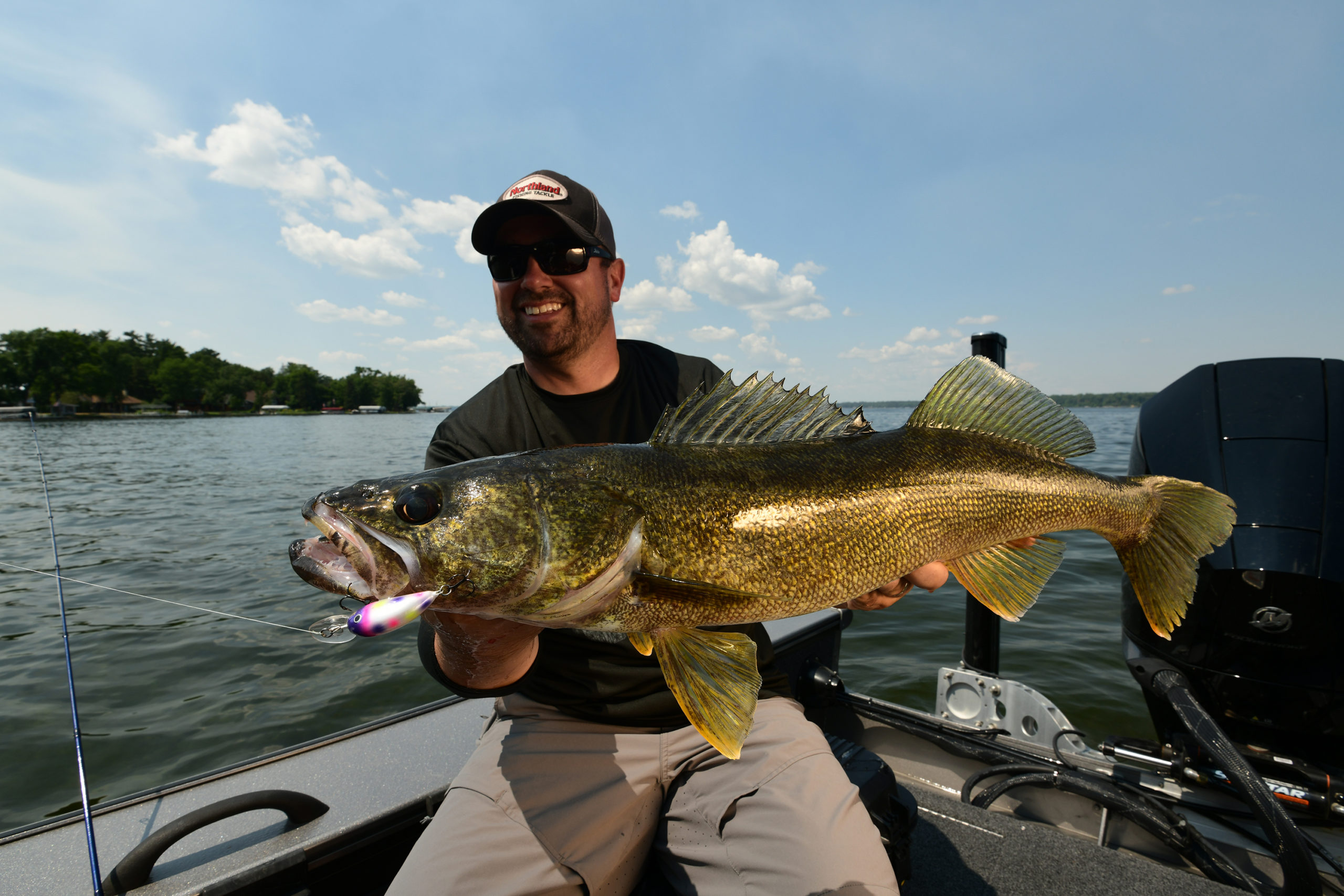
If you’ve ever walked into a sporting goods store looking to buy some crankbaits, the wall of balsa, plastic, and packaging can be downright overwhelming. Not only are there differing shapes, sizes, and colors, you’ve got a host of manufacturers to choose from. Some have rattles, some don’t. You’ve got stickbaits, shad-style baits, jointed versions, and a number of bill varieties too. It all begs the question, “where to start?” Like many good questions, the answer “it depends,” begets further questions on species, time of year, casting vs. trolling, and a host of other variables. In this two-part article, we’ll break down these differentiators and more while exploring what could be the most effective bait of summertime for most species.
Materials
For simplicity’s sake, you’ve really got a single fork in the road here, leading one of two ways. Balsa or some form of plastic makes up almost all crankbaits on the market and for good reason. Balsa has some advantages, namely in its unmistakably “live” action given its incredible buoyancy. Yet, balsa without some form of Heat Compression Molding (HCM) and through-wire reinforcing can be weak, causing bills to break off or baits to snap in half. Plastic, in its own right, is very durable but has slightly less action than its balsa brethren. However, plastic baits can be more easily molded to fit rattle chambers, different shapes, and a host of other improvements that are much more realized in a hollow-body bait. One floats, and the other can but often sinks slowly, such that depending on the cover you may be cranking, balsa could be more useful.
Shapes
There are some really wild shapes out there to mimic a variety of bait styles primarily. Chief among them are relatively narrow, shad-style baits that copy a host of minnow species quite well. From here, we get fatter, shallower running baits that often serve bass circles more readily than the walleye ones so well represented with shad baits. You’ve also got stick baits, which are aptly-named longer varieties that can run shallow with a modest bill, or very deep with large and long bills that bring them there. Breaking baits down into these three categories of shad, fatter baits (technical term), and stickbaits really helps in identifying where and how they may be used. From here, there are all kinds of baits spring forth, just in lesser numbers with fewer use-cases. First would be a hybrid of fatter shad style baits that have become popular in casting and trolling applications both. Jointed baits are commonly used when a bit more wobble or action is useful in being seen. Larger predator-style offerings simply mimic larger forage too, rounding out the list of other baits out there.
Bills
As a general rule, the larger and longer the bill configuration, the deeper the bait is designed to dive. The converse is also true, especially if the split ring comes out of the front point of the bait, and the diving bill is below and detached from the bill itself. These are truly shallow-running crankbaits that rarely get past 3 feet in depth. Rounded bill designs are far more common than their square-bill counterparts, but square-bill baits have seen a surge in popularity among bass circles. That’s because square-bill baits have a more natural tendency to bounce off of rocks, wood, and other cover without hanging up, so these baits should be considered especially when shallow cranking the heavy stuff. Most crankbait bills are plastic of some kind, though again, the square-bill case does see some alternative plastics that resemble computer chip material more so than standard bills found on most baits. The longest, and largest bills on big stick-baits can bring these lures down to the 30FOW region and beyond, such that bill size and length can make a big difference on the depths you’re covering. The opposite is true for shallow running or “step-style bill” crankbaits. By putting a jog in the bait’s bill, you can get many of the shad or stick-baits to run one-3 foot below the surface.
Casting vs. Trolling
As a general rule, many of the shad and stick-bait style lures are ones that can be trolled effectively. That’s not to say they can’t be cast as well, but many of the smaller balsa lures can be tricky to launch given how light they are on conventional tackle. The larger (fatter) varieties are classic casters that many bass anglers associate with working a shoreline, deep break, or other structure and cover. While many people associate trolling with walleye fishing and casting with bass anglers, there’s quite a bit of crossover in river scenarios and elsewhere, as predators of all kinds readily eat baits that are either trolled or cast. Deep running baits with large bills, as well as the shallow running stepped-bill varieties are almost always trolled, and nearly never cast, however, with these being more one-dimensional in their use.
To get the most from each bait, it’s useful to understand more about their construction, shape, bill characteristics, and applications, so as to use them properly when on the water. Really, it’s all about putting an enticing offering in front of the most fish at any given time, so that’s what we’ll focus on for part two where we’ll tackle running depth as dive curves, some general advice for tuning, as well as some advanced trolling information.
CLICK HERE for Crankbait Cheat Sheet – Part Two



